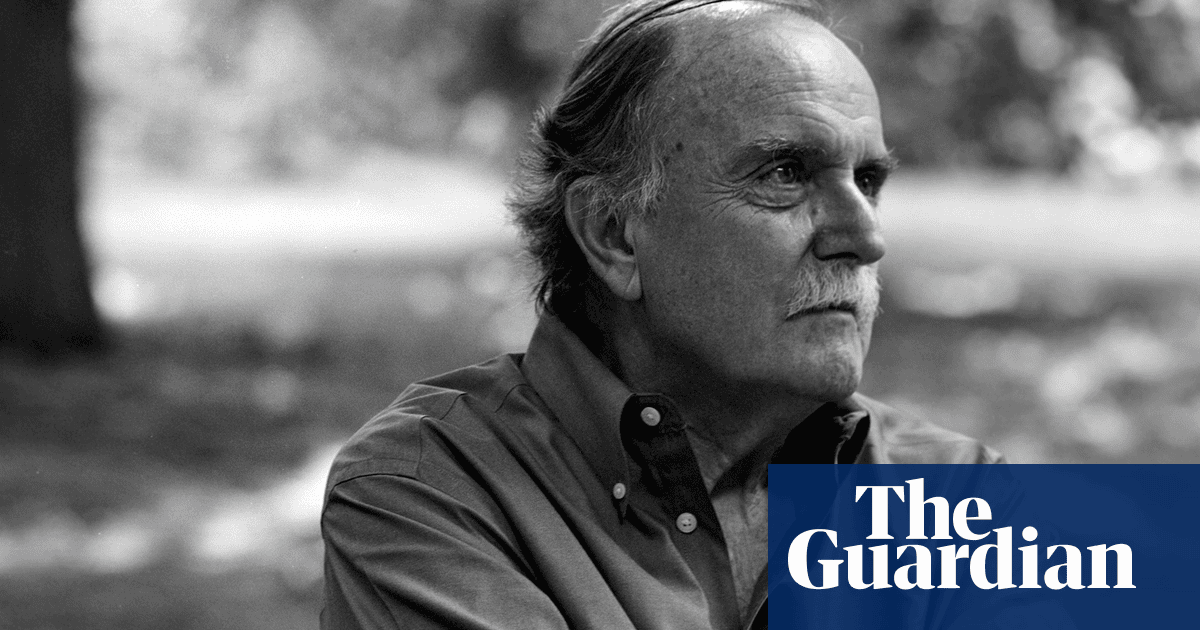Alvin Lucier still does music four years after his death – thanks to an artificial brain | Art

In a dark room, like an orchestra set in some parallel universes, a broken rattling rattles, Hums and Wearbles Symphony. But there is no seemingly a musician.
If you look closely, an artist has a small part. Even without a pulse.
In the center of the room, visitors wander around a rising pedestal to see the brains behind the operation. Under the magnifier, sit on two white stains like a small jellyfish. Together, they form a “mini brain ın of the late US musician Alvin Lucier, raised in the laboratory-they create a point after their death.
Lucier was the pioneer of experimental music that died in 2021. However, he was raised here with the latest neuroscience in Western Australia’s art gallery.
“When you look at that central pedestal, you pass through a threshold, Nat says Nathan Thompson, an artist and the creator of the project. “You look at Abyss and you look at something that’s alive – not just the same as you.”
Revivation is the work of a “four-headed monster ,, consisting of a scientist and artists who have pushed the boundaries of biological arts for decades, and a neuroscience, Stuart Hodgetts, a neuroscience, Stuart Hodgetts.
Lucier was perfectly collaborator. In 1965, the composer became the first artist to use Brainwaves to produce live sound for solo artist. For a long time, fans of the business began to brainstorm with him in 2018. However, until 2020, then until the age of 89 and did not suffer from Parkinson’s disease, the composer agreed to donate his life.
First, white blood cells were re -programmed into stem cells. Later, the team, directed by Hodgetts, turned cells into cerebral organoids – the neuron clusters that mimic the human brain.
During the pandemi, the team met with Lucier on a zoom every two weeks until he died in 2021. As his health decreased, he spoke in the whispering pieces, he was usually quoted by his assistant, but remained a guiding force.
“We were like art students who learned from the professor, Thom says Thompson. “Something unnecessary was the ability to cut and reach the core of what he predicted.”
Ben-Ary adds: “But this was a cooperation. We came with 25 years of experience in biological arts… [Lucier]It was a lot of science fiction. “
In early speeches, Lucier suggested fantastic ideas as sending sound waves to the moon. However, the musician and team ultimately hosted a performance of neural signals, acoustics and fields with a lifelong spell.
The facility, which is both sculpture and sonic, has 20 large paraboolic rice plates leaning from walls such as golden satellite dishes. There is a converter (like a speaker) hidden behind each plate and a knife that responds to neural signals from the mini brain-a kind of breathless, scattered film music.
The revivasyon team used special technology to implement the business. Lucier organoids were enlarged to a thin network of 64 electrodes developed with a German biomühend and allowed neural signals to be caught from multiple layers such as a developing brain. Gingold later adapted a platform of open source to interpret and produce sound and transformed the artificial brain into a lively, sensitive artist.
More importantly, they do not produce lucier organoids not only sound, but they also receive. It receives ambient noise, including microphones, human sounds and resonance tones of the gallery, and converting sound data into electrical signals and feeding back to the brain. “We are very interested in knowing whether the organoid will change or learn over time, Ben Ben-Ary says Ben-Ary.
The project raises timely ethical and philosophical questions about biology, artificial intelligence and writing. However, according to the team, the revival is art and the second is science.
“Where is creativity lying?” Thompson Ponders. “As cultural workers, we are really interested in these big questions. But this work does not give answers.
However, the team is hopeful that their wide neural data can help future scientific questioning. Bing When we work with these great artistic questions, we can force the limits of what is possible, Ging says Gingold. “Because science did not answer it. They are not even at the point of asking the question.”
When we look forward, the team hopes that the animation will live in a fully and creative way. Ben-Ary says Lucier’s proxy artist is a dream of creating “new memories, new stories .. There are also whispers of more extreme future: adapt the system to remote, uninhabitable environments like Antarctica or even launch into orbit.
For now, Lucier’s genius remains in that dark room in PeTH, creating through a brain -free brain.
Ben-Ary laughed when I told Amanda’s daughter about the project, Ben Ben-Ary laughed. “He thought, that’s my father. Just before he died, he arranged his play forever. He can’t go. He needs to continue playing.”




